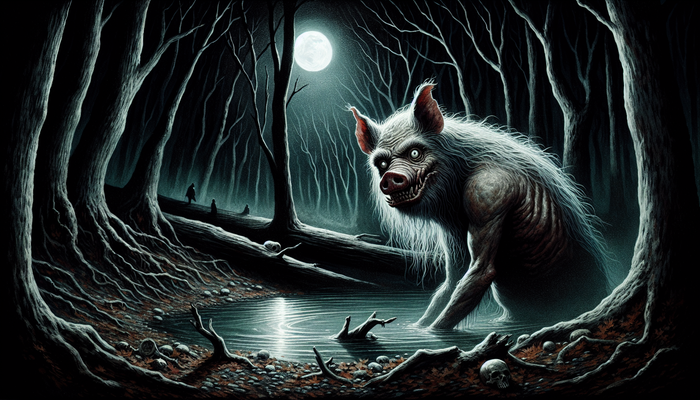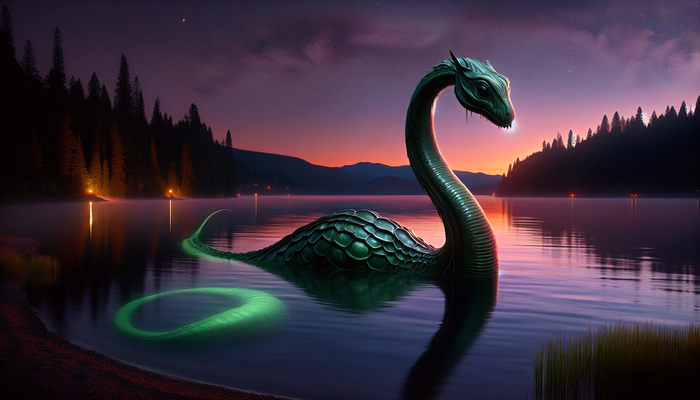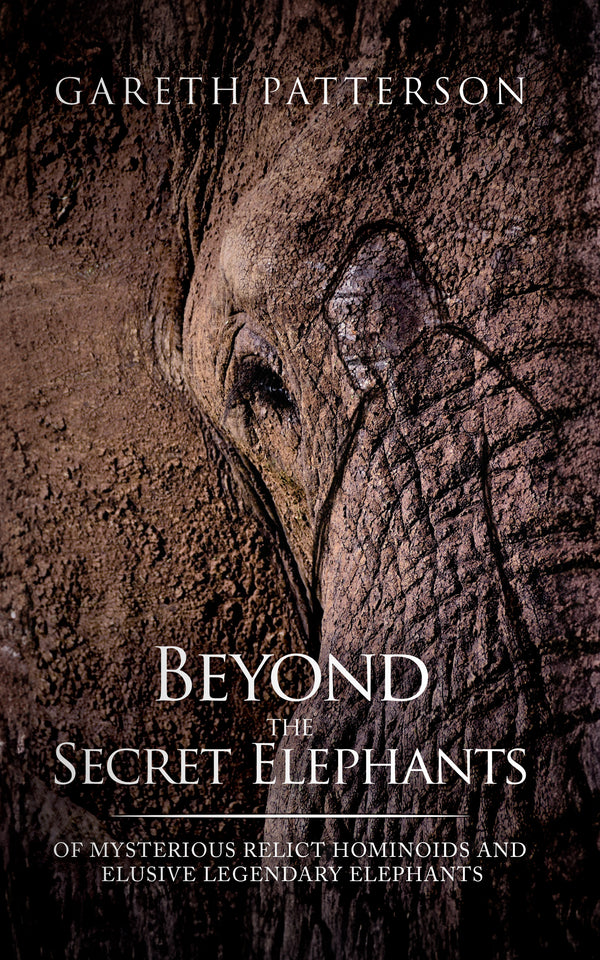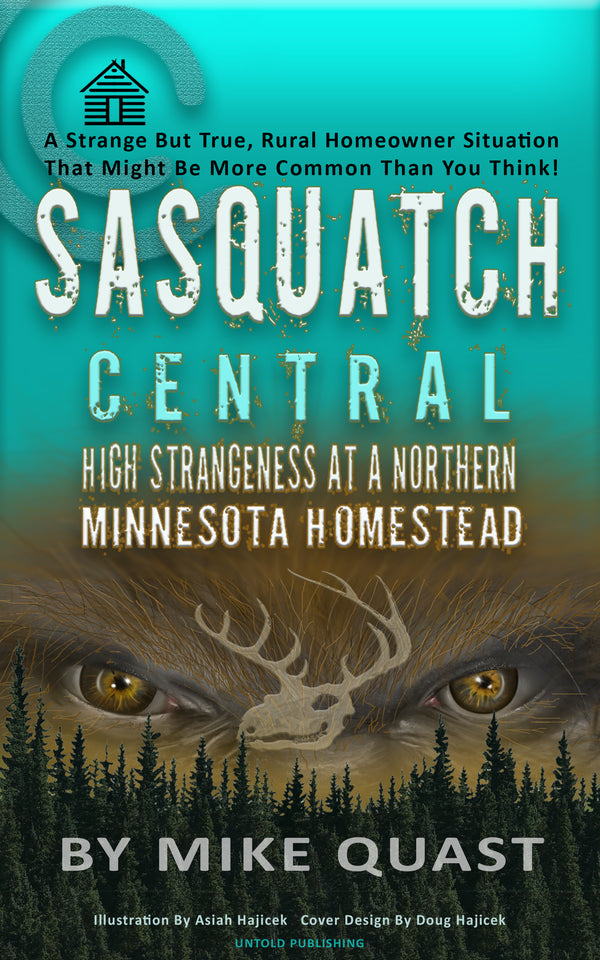Florida's Elusive Skunk Ape: A Look at Bigfoot Sightings in the Sunshine State
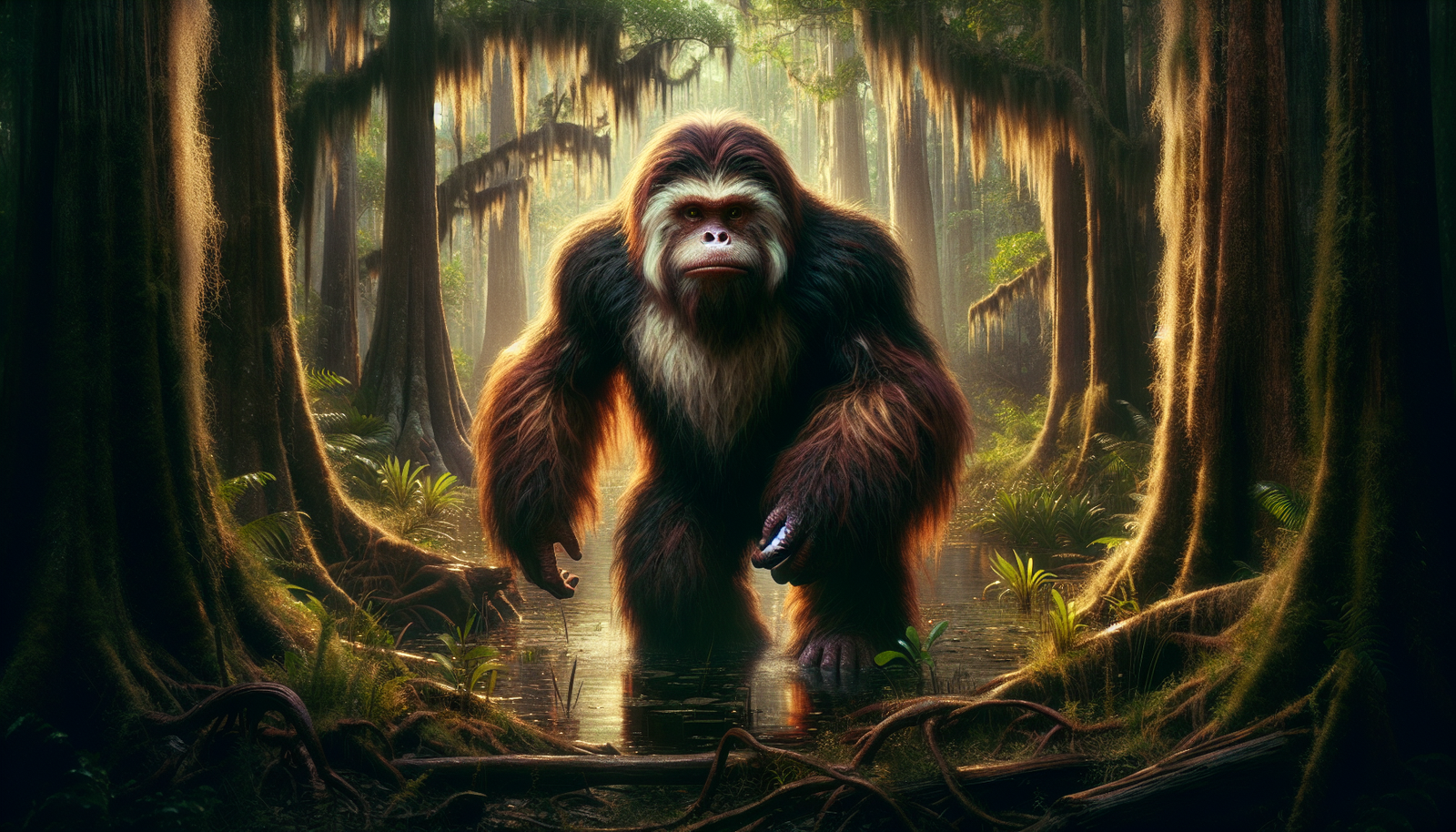
By Anthony Romano, Cryptozoologist
The allure of cryptozoology and the search for undiscovered creatures has captivated the human imagination for centuries. From the dense forests of the Pacific Northwest to the remote mountains of the Himalayas, tales of mysterious, elusive beasts have persisted, defying conventional wisdom and scientific explanation. Among these legendary creatures, one stands out for its peculiar habitat and pungent odor: the Skunk Ape, Florida's very own Bigfoot.
As a software engineer and passionate Bigfoot researcher, I've long been fascinated by the Sunshine State's unique position as a hotspot for Skunk Ape sightings. The swamps, forests, and rural areas of Florida have been the backdrop for countless encounters with this enigmatic creature, leaving behind a trail of eyewitness accounts, blurry photographs, and unanswered questions.
In this article, I aim to delve deep into the mystery of the Skunk Ape, exploring its rich history, the most compelling sightings, the various theories surrounding its existence, and its enduring impact on Florida's culture and folklore. By combining rigorous research with an open-minded approach, I hope to shed new light on this elusive creature and the ongoing quest to uncover the truth behind the legend.
The Legend of the Skunk Ape
The origins of the Skunk Ape can be traced back to the ancient folklore of Florida's indigenous tribes. The Seminole and Miccosukee people have long told stories of the "Esti Capcaki" or "Furry Tall Man," a mysterious, bipedal creature that roams the forests and swamps, acting as a guardian of the natural world. These tales depict the Skunk Ape as a powerful, sometimes fearsome being, capable of great feats of strength and stealth.
The first recorded historical account of a possible Skunk Ape sighting dates back to 1818, when a newspaper in Apalachicola reported a story of a "man-sized monkey" that had been raiding food stores and stalking fishermen along the shore. This early encounter set the stage for sporadic sightings throughout the 19th and early 20th centuries, hinting at the presence of an unknown primate in the Florida wilderness.
As the legend of the Skunk Ape grew, so did the speculation about its origins and nature. Some researchers have suggested that the creature may be a relict population of an extinct ape species, such as Gigantopithecus or Paranthropus, that somehow survived in the isolated swamps of Florida. Others have pointed to the possibility of escaped exotic primates, like chimpanzees or orangutans, adapting to the local environment and giving rise to the Skunk Ape legend.
Regardless of its true origins, the Skunk Ape has become a deeply ingrained part of Florida's cultural heritage, representing the untamed, mysterious aspects of the state's natural world. The creature's enduring presence in local folklore serves as a reminder of the vast, unexplored wilderness that still exists in the shadows of Florida's rapidly developing landscape.
The Golden Age of Skunk Ape Sightings (1950s-1970s)
The mid-20th century marked a turning point in the history of Skunk Ape sightings, as reports of encounters with the creature began to increase dramatically. From the 1950s through the 1970s, hundreds of sightings were documented across Florida, with a particular concentration in the Everglades and surrounding areas. The Bigfoot Field Researchers Organization (BFRO) has meticulously cataloged these reports, providing a fascinating glimpse into the golden age of Skunk Ape activity.
One of the most notable encounters during this period occurred in 1974, when two Palm Beach County sheriff's deputies, Marvin Lewis and Ernie Milner, claimed to have had a face-to-face encounter with a Skunk Ape. According to their account, the creature stalked them through a grove before they opened fire, allegedly hitting the beast. Despite an extensive search, no body was ever recovered, but the deputies did find a pushed-down fence with hair snagged on the barbed wire, fueling speculation about the creature's existence.
The 1970s also saw a rash of Skunk Ape sightings in Broward County, with multiple eyewitnesses reporting a 5-7 foot tall, dark-furred creature lurking in the swamps and forests. These sightings garnered significant media attention, with local newspapers and television stations covering the story and interviewing witnesses. The increased public interest in the Skunk Ape even led to a proposed bill in the Florida legislature in 1977, which sought to make it illegal to harm or molest anthropoids or humanoid animals. Although the bill did not pass, it reflected the growing belief in the creature's existence and the desire to protect it.
As the golden age of Skunk Ape sightings unfolded, researchers and enthusiasts began to organize and investigate the phenomenon more systematically. The BFRO, founded in 1995, has been at the forefront of this effort, collecting and analyzing reports, conducting field investigations, and working to advance the scientific study of the Skunk Ape and other Bigfoot-like creatures.
Despite the wealth of eyewitness accounts and anecdotal evidence, the golden age of Skunk Ape sightings did not yield any definitive proof of the creature's existence. Skeptics argue that many of these sightings can be attributed to misidentification, hoaxes, or the power of suggestion, while believers maintain that the sheer volume and consistency of the reports point to the presence of an undiscovered primate in the Florida wilderness.
As we continue to explore the mystery of the Skunk Ape, the golden age of sightings serves as a crucial period in the creature's history, one that has shaped our understanding of the phenomenon and inspired countless researchers and enthusiasts to pursue the truth behind the legend.
Modern Skunk Ape Sightings and Evidence
As the 20th century gave way to the 21st, reports of Skunk Ape sightings continued to trickle in from across Florida. While the frequency of encounters may have diminished compared to the golden age of the 1950s-1970s, the modern era has brought forth some of the most intriguing and controversial pieces of evidence in the history of the Skunk Ape phenomenon.
One of the most famous cases in recent years is the Myakka Skunk Ape photos, which surfaced in 2000. An anonymous letter, sent to the Sarasota County Sheriff's Office, contained two photographs allegedly depicting a large, hairy, ape-like creature. The letter claimed that the creature had been stealing apples from the sender's back porch, and the photos were taken in an attempt to identify the culprit. The images, which show a dark, bipedal figure lurking in the brush, have been the subject of intense debate among researchers and skeptics alike. While some believe the photos to be genuine evidence of the Skunk Ape's existence, others argue that they are likely a hoax or a case of misidentification.
Another hotbed of modern Skunk Ape activity has been the Florida Everglades. In 1997, tour operator David Shealy reported a series of sightings near his campground, claiming that the creature had been raiding bait stands filled with lima beans. Shealy's account sparked a renewed interest in the Skunk Ape, and several other witnesses came forward with their own sightings in the following weeks. One of the most compelling pieces of evidence from this period is a photograph taken by Ochopee Fire Control District Chief Vince Doerr, which allegedly shows a large, bipedal creature in the swamp.
As a researcher and tech enthusiast, I've been fascinated by the potential for modern technology to aid in the search for the Skunk Ape. Trail cameras, drones, and thermal imaging devices have all been employed in recent years, with the hope of capturing definitive evidence of the creature's existence. While no conclusive proof has yet emerged, the use of these tools has helped to refine search strategies and gather valuable data about the Skunk Ape's potential habitat and behavior.
The BFRO and other dedicated researchers continue to investigate Skunk Ape sightings and gather evidence, driven by a passionate belief in the creature's existence and a desire to solve one of Florida's most enduring mysteries. As new reports surface and innovative technologies are brought to bear on the problem, the modern era of Skunk Ape research holds the promise of new discoveries and insights that may finally shed light on the truth behind the legend.
Theories and Explanations
The enduring mystery of the Skunk Ape has given rise to a wide range of theories and explanations, each seeking to account for the creature's alleged existence and the numerous sightings reported over the years. These theories range from the scientific to the speculative, and they offer a fascinating glimpse into the diverse perspectives and approaches that characterize the field of cryptozoology.
One of the most compelling theories suggests that the Skunk Ape may be an undiscovered species of primate, closely related to other legendary creatures like the Yeti of the Himalayas or the Orang Pendek of Sumatra. Proponents of this theory argue that the Skunk Ape could be a relict population of an extinct ape species, such as Gigantopithecus or Paranthropus, that somehow survived in the isolated swamps and forests of Florida. This hypothesis is supported by the consistency of eyewitness descriptions, which often portray the Skunk Ape as a large, bipedal, ape-like creature with a strong, musky odor.
However, the lack of physical evidence, such as bodies, bones, or DNA samples, has made it difficult to substantiate the undiscovered species theory. Skeptics argue that if a breeding population of large primates existed in Florida, there would be more concrete proof of their presence, such as clear photographs, video footage, or even a specimen. The harsh, unforgiving environment of the Everglades, coupled with the creature's alleged intelligence and elusiveness, has been cited as a possible explanation for the absence of definitive evidence.
Another theory that has gained traction in recent years is the idea that some Skunk Ape sightings may be attributed to escaped exotic primates from breeding facilities and sanctuaries. Florida is home to several such facilities, including the Primate Products, Inc. in Immokalee and the Center for Great Apes in Wauchula. Proponents of this theory suggest that chimpanzees, orangutans, or other large primates may have escaped captivity and adapted to the Florida wilderness, giving rise to the Skunk Ape legend. While this explanation may account for some sightings, it fails to address the long history of Skunk Ape reports predating the establishment of these facilities, as well as the consistency of the creature's described features across multiple encounters.
Skeptics have also put forth the idea that many Skunk Ape sightings can be explained by misidentification of known animals, such as bears, feral hogs, or even humans in costumes. The power of suggestion and the influence of popular culture have also been cited as factors that may contribute to the perception and interpretation of ambiguous stimuli as Skunk Ape encounters. Psychological and sociological factors, such as the desire to find meaning in the unexplained or the need for a sense of mystery and wonder in an increasingly rational world, have also been proposed as underlying drivers of the Skunk Ape phenomenon.
As a researcher, I believe that the truth behind the Skunk Ape likely lies somewhere between these various theories and explanations. While the undiscovered species hypothesis remains the most tantalizing and potentially groundbreaking, it is crucial to approach the subject with a critical eye and a commitment to evidence-based investigation. By carefully examining the available data, employing rigorous scientific methods, and remaining open to new ideas and perspectives, we may yet unravel the mystery of Florida's elusive Skunk Ape.
The Skunk Ape in Florida Culture
Beyond its status as a cryptozoological enigma, the Skunk Ape has become a deeply ingrained part of Florida's cultural landscape. The creature has been adopted as an unofficial state mascot, representing the wild, untamed aspects of Florida's natural heritage and serving as a symbol of the state's unique character and identity.
The Skunk Ape's influence can be seen throughout Florida, from roadside attractions and local businesses to regional folklore and artistic interpretations. In the small town of Ochopee, for example, the Skunk Ape Research Headquarters has become a popular tourist destination, offering visitors a chance to learn about the creature's history, view alleged evidence, and even participate in guided swamp tours. The headquarters, run by Dave Shealy, a passionate Skunk Ape researcher and advocate, has helped to keep the legend alive and foster a sense of community among believers and enthusiasts.
Annual Bigfoot conferences and gatherings, such as the Florida Bigfoot Conference, have also played a significant role in promoting the Skunk Ape's cultural presence. These events bring together researchers, eyewitnesses, and curious members of the public to share stories, discuss theories, and celebrate the enduring mystery of the creature. The conferences serve as a testament to the Skunk Ape's ability to capture the imagination and inspire a sense of wonder and adventure in those who are drawn to its legend.
The Skunk Ape has also left its mark on Florida's artistic and literary landscape. Numerous books, films, and documentaries have explored the creature's history and the ongoing search for evidence of its existence. These works often delve into the deeper cultural and psychological significance of the Skunk Ape, examining its role as a symbol of the human relationship with the natural world and the enduring power of myth and folklore in shaping our understanding of reality.
In many ways, the Skunk Ape has become a metaphor for the wild, untamed aspects of Florida itself. As the state has undergone rapid development and urbanization in recent decades, the creature has come to represent a connection to the primordial wilderness that once dominated the landscape. The Skunk Ape's enduring presence in Florida's cultural consciousness serves as a reminder of the importance of preserving and protecting the state's natural heritage, even as the modern world encroaches on its traditional habitats.
As a researcher and enthusiast, I have been continually struck by the profound impact that the Skunk Ape has had on Florida's cultural identity. The creature's ability to inspire wonder, curiosity, and a sense of connection to the natural world is a testament to the enduring power of myth and legend in shaping our understanding of ourselves and our place in the universe. By embracing the Skunk Ape as a cultural icon, Floridians have found a way to celebrate the state's unique character and to keep alive the spirit of mystery and adventure that has long defined its history and identity.
From Bigfoot to UFOs: Hangar 1 Publishing Has You Covered!
Explore Untold Stories: Venture into the world of UFOs, cryptids, Bigfoot, and beyond. Every story is a journey into the extraordinary.
Immersive Book Technology: Experience real videos, sights, and sounds within our books. Its not just reading; its an adventure.



